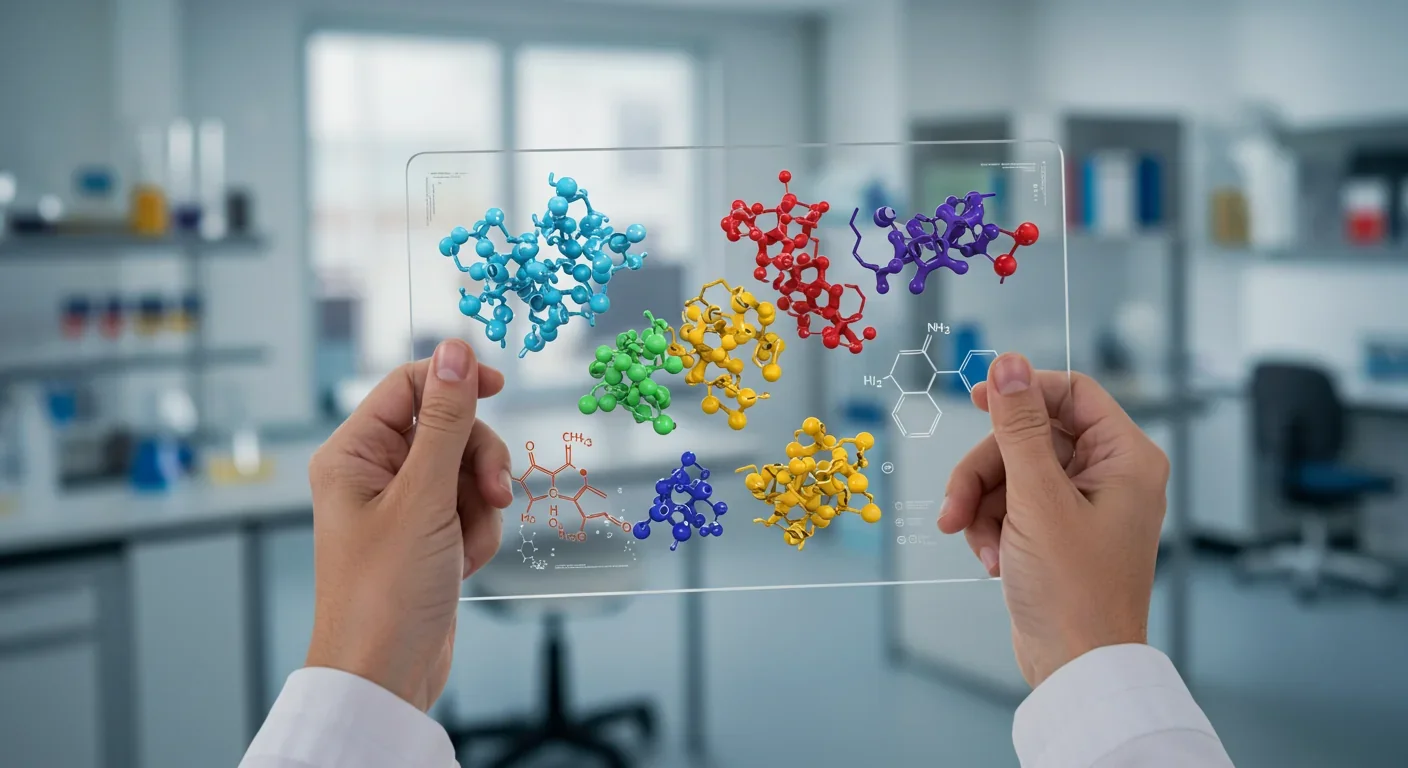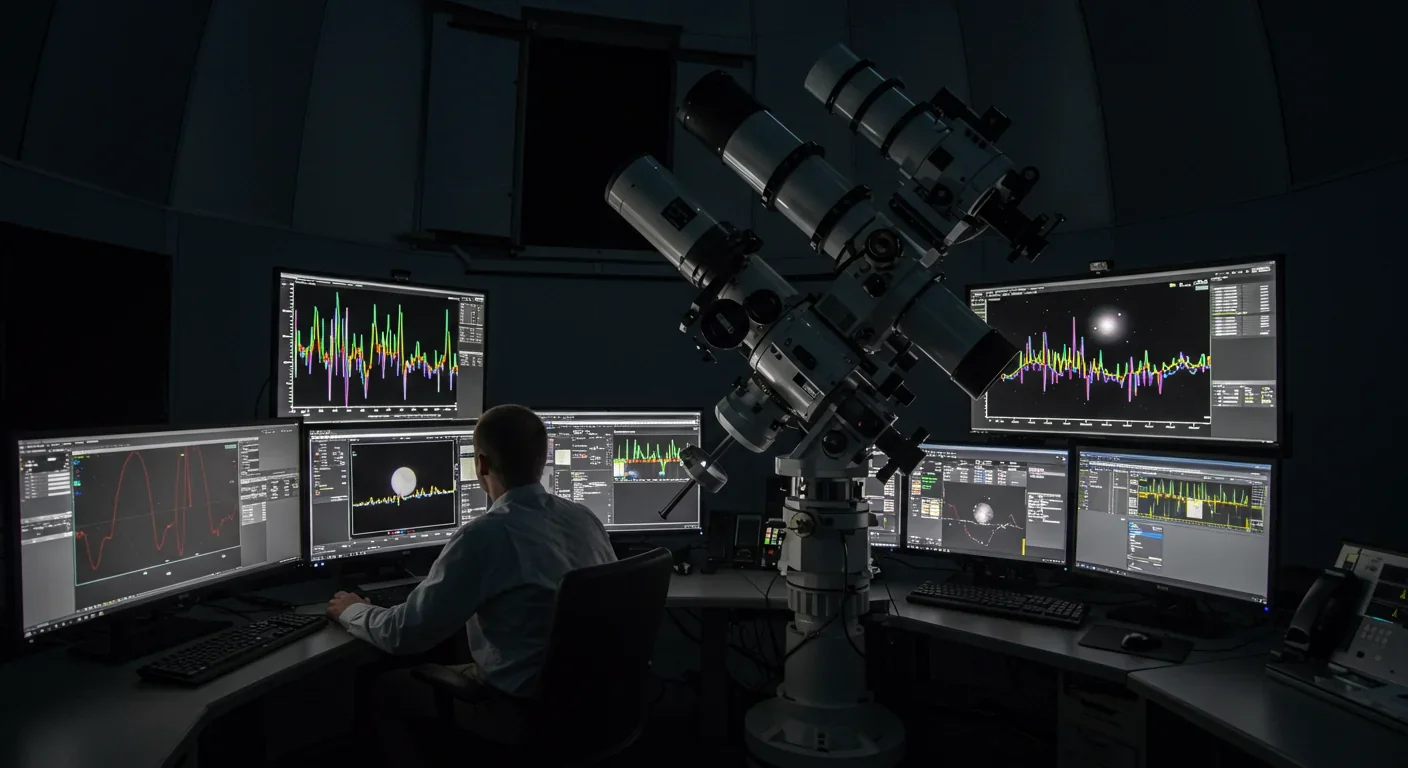How Transformers Became the AI Powerhouse in 2017

TL;DR: Artificial intelligence is revolutionizing drug discovery by designing treatments for previously incurable diseases in months instead of decades. Machine learning algorithms like AlphaFold predict protein structures with unprecedented accuracy, while generative models create entirely new molecules optimized for safety and efficacy. AI-designed drugs are already entering clinical trials with 80% Phase I success rates—far exceeding the 15% industry average—and have produced breakthrough treatments for rare conditions like Castleman's disease and inflammatory bowel disease. Despite challenges around bias, transparency, and regulation, AI is collapsing drug development timelines from 10-15 years to under three years, promising a future where curing the incurable becomes routine.

By 2030, artificial intelligence will have designed treatments for diseases we once deemed impossible to cure. That's not a prediction—it's already happening. In hospital wards across the world, patients with rare, fatal conditions are walking out healthy thanks to drugs that machine learning algorithms designed in months, not decades.
The age of untreatable disease is ending. Not because we suddenly understood these illnesses better, but because we handed the problem to machines that think faster and see patterns we never could.
In 2024, a patient with idiopathic multicentric Castleman's disease—a rare, often fatal immune disorder—was dying. Doctors had exhausted every option. Then an AI system at the University of Pennsylvania combed through 4,000 FDA-approved drugs, analyzing molecular structures, disease pathways, and protein interactions at computational speeds no human team could match. The algorithm identified adalimumab, a TNF-inhibitor normally used for arthritis, as a potential cure.
The patient received the drug. Within months, the disease went into remission. Two years later, they remain disease-free.
This wasn't luck. It was machine precision. The AI didn't guess—it calculated probabilities across millions of molecular interactions, identified a pathway humans had overlooked, and recommended a treatment that worked. Published in the New England Journal of Medicine, this case represents something profound: AI didn't just accelerate drug discovery. It solved a medical mystery that stumped every human expert.
Welcome to the era where algorithms cure what doctors cannot.
For context, developing a new drug traditionally takes 10 to 15 years and costs over $2.6 billion. Pharmaceutical companies screen millions of compounds, test thousands, and watch 90% fail before reaching patients. The process is slow, expensive, and frequently ends in failure.
Rare diseases amplify this problem. With small patient populations, pharmaceutical companies have little financial incentive to invest. More than 7,000 rare diseases affect 300 million people globally, yet over 90% lack effective treatments. Patients with conditions like spinal muscular atrophy, certain cancers, and neurodegenerative disorders have historically faced a simple, brutal reality: medical science had no answer.
Then came AlphaFold.
In 2020, DeepMind's AlphaFold stunned the scientific world by solving the "protein folding problem"—a challenge that had confounded researchers for 50 years. Proteins are the machinery of life, but their function depends entirely on their 3D shape. Predicting that shape from a protein's amino acid sequence was considered nearly impossible.
AlphaFold 2 did it with 90% accuracy. By 2024, AlphaFold 3 expanded its capabilities to predict not just protein structures, but how proteins interact with DNA, RNA, and small molecules—the building blocks of drugs. It achieved a 50% improvement in accuracy over existing methods and became the first AI system to surpass physics-based tools on the PoseBusters benchmark.
More than 200 million protein structures have now been predicted by AlphaFold, providing scientists with an unprecedented library of targets for drug design. Importantly, AlphaFold 3 is free for non-commercial research, democratizing access to cutting-edge structural biology and accelerating discovery timelines from years to days.
This wasn't just an academic achievement. It was the infrastructure for a revolution.

Modern AI-driven drug discovery combines three powerful technologies:
1. Deep Learning for Structure Prediction
AlphaFold and similar systems use transformer-based neural networks—the same architecture behind ChatGPT—to model molecular interactions. These models are trained on millions of known protein structures and learn to recognize patterns in how amino acids fold and bind. Unlike traditional physics simulations that take weeks, AlphaFold predicts structures in seconds.
2. Generative Models for Molecule Design
Generative adversarial networks (GANs), variational autoencoders (VAEs), and diffusion models create entirely new molecular structures from scratch. Instead of screening existing drug libraries, these algorithms explore vast chemical spaces—over 10^60 possible drug-like molecules—and propose candidates optimized for specific properties like binding affinity, bioavailability, and minimal toxicity.
Insilico Medicine's Chemistry42 platform, for example, uses generative reinforcement learning to design molecules. In 2024, it produced ISM5411, a gut-restricted drug for inflammatory bowel disease, in just 12 months. The platform generated and screened 115 molecules, a process that would traditionally take 3 to 5 years.
3. Reinforcement Learning for Optimization
Reinforcement learning (RL) algorithms iteratively improve molecule designs by treating drug discovery as a game. The AI proposes a molecule, evaluates its properties (using predictive models), receives a "reward" based on performance, and refines the design. Proximal Policy Optimization (PPO), a leading RL algorithm, achieved a 94.86% chemical validity rate when generating JAK2 inhibitors—nearly double the 46.59% rate of older methods.
These technologies work in concert: AlphaFold identifies the target, generative models propose candidate drugs, and RL fine-tunes them for optimal performance. The result? Timelines collapse from over a decade to under three years.
AI-driven drug discovery isn't just faster—it's fundamentally more equitable.
Rare Diseases Get Attention
Traditionally, pharmaceutical companies ignored rare diseases due to small markets. AI changes the economics. By drastically reducing discovery costs—from $400 million to a fraction of that—companies like Insilico Medicine and Exscientia can profitably target conditions affecting only thousands of patients.
Moderna and Genentech now use AI to design RNA therapies for rare genetic conditions. Machine learning analyzes patient genetic data, identifies therapeutic targets, and proposes antisense oligonucleotides (ASOs) to modulate gene expression. For spinal muscular atrophy, AI accelerated ASO identification, turning a fatal childhood disease into a treatable condition.
Personalized Medicine at Scale
AI enables precision medicine by analyzing individual patient genomes and predicting which drugs will work best. Exscientia's platform integrates pharmacodynamic markers to stratify patients, ensuring clinical trials enroll participants most likely to benefit. This reduces trial sizes, speeds approvals, and gets effective treatments to patients faster.
Global Health Impact
In low-income countries, where rare diseases often go undiagnosed and untreated, AI offers hope. Cloud-based platforms like NVIDIA BioNeMo and Google's AlphaFold Server provide free access to cutting-edge tools, enabling researchers in under-resourced regions to participate in drug discovery. Knowledge graphs linking genetic data to molecular interactions allow scientists to propose therapies even without expensive lab infrastructure.
Job Market Shifts
Contrary to fears, AI isn't replacing scientists—it's amplifying them. Martin Redhead, associate vice president at Exscientia, emphasizes: "AI is going to make you a lot more efficient. It is going to make you better at your job." Demand for computational biologists, AI engineers, and data scientists in pharma has surged. Meanwhile, robotic labs automate routine synthesis and testing, freeing chemists to focus on strategy and validation.
Unprecedented Speed
Insilico Medicine's AI platform designed ISM001-055, a drug candidate for idiopathic pulmonary fibrosis, in 18 months. It reached Phase II clinical trials—a milestone that traditionally takes 6 to 10 years. The company has since nominated 22 preclinical candidates, with 10 reaching clinical trials and one completing Phase IIa.
Atomwise's AtomNet platform screens over 16 billion synthesizable molecules in under two days—10,000 times faster than traditional high-throughput screening. This velocity allows researchers to test hypotheses rapidly, iterate designs, and identify hits in weeks instead of years.
Cost Reduction
AI slashes discovery costs by eliminating failed candidates early. Insilico estimates its AI-driven approach costs one-tenth the traditional $400+ million price tag. By predicting toxicity, metabolic stability, and efficacy in silico, companies avoid expensive late-stage failures.
Exscientia identified a CDK7 inhibitor after testing just 136 compounds—a dramatic reduction from the thousands typically required. This efficiency translates to lower drug prices and faster access for patients.
Higher Success Rates
Early data show AI-designed molecules have an 80% Phase I clinical trial success rate, compared to 15% industry average. Why? AI models trained on vast datasets learn which molecular features correlate with safety and efficacy. They avoid "molecular dead ends" that human intuition might miss.
Targeting the Undruggable
AI tackles proteins previously considered "undruggable"—targets with no obvious binding pockets or unstable structures. Insilico's collaboration with Sanofi focuses on a transcription factor in oncology, historically deemed impossible to target. By using AI to explore unconventional binding sites and novel scaffolds, they've produced a first-in-class candidate now in Phase II trials.
The Black Box Problem
AI models are notoriously opaque. When a neural network recommends a molecule, scientists often can't explain why. This "black box" problem creates trust issues. Regulators demand transparency, but deep learning models with millions of parameters resist simple explanations.
Explainable AI (XAI) techniques—such as attention visualization and counterfactual analysis—are emerging solutions. These methods highlight which molecular features influenced the AI's decision, enabling scientists to validate recommendations and refine designs. However, XAI remains a work in progress, and skepticism persists.
Bias Amplification
AI models inherit biases from training data. If clinical datasets underrepresent women, minorities, or certain age groups, AI-designed drugs may be less effective or safe for those populations. Addressing this requires diverse, high-quality datasets—a challenge given data silos, privacy regulations, and historical inequities in medical research.
Companies are responding with synthetic data augmentation (creating artificial patient data to balance underrepresented groups) and federated learning (training models across distributed datasets without centralizing sensitive information). Still, algorithmic bias remains a critical concern.
Regulatory Uncertainty
In January 2025, the FDA released draft guidance on using AI in drug development, outlining a risk-based credibility assessment framework. High-risk AI models—those impacting patient safety or drug quality—must disclose architecture, data sources, training methods, validation processes, and performance metrics.
While this guidance provides a pathway, many questions remain. How will regulators assess AI models that continuously learn post-deployment? What happens if an algorithm's predictions drift over time? The FDA emphasizes "human in the loop" oversight, but balancing innovation with safety is complex.
The EU AI Act classifies healthcare AI as "high-risk," imposing strict transparency and accountability requirements. Yet it exempts AI used solely for scientific research—a nuance that creates regulatory gray areas.
Synthetic Feasibility Gaps
AI can design molecules that look perfect on paper but are impossible to synthesize. Generative models sometimes propose structures requiring 20+ synthesis steps or toxic reagents. Integrating retrosynthesis tools—such as IBM RXN for Chemistry and Synthia—addresses this by predicting synthetic routes in parallel with molecule generation. IBM RXN achieves over 90% accuracy in reaction prediction, ensuring proposed molecules are chemically feasible.
Data Scarcity for Rare Diseases
Ironically, the diseases AI could most help—rare conditions—often lack the large datasets AI requires. Machine learning thrives on data, but rare diseases may have only dozens of documented cases. Transfer learning (training models on related diseases) and knowledge graphs (linking genetic, biochemical, and clinical data) mitigate this, but challenges remain.
Intellectual Property and Trade Secrets
AI models trained on proprietary datasets create IP dilemmas. If a company's AI recommends a molecule based on competitor data (accessed via collaborations or databases), who owns the resulting drug? Sponsor-led federated learning initiatives and differential privacy techniques aim to enable data sharing without compromising trade secrets, but legal frameworks lag behind technology.

United States: The Startup Hub
The U.S. dominates AI drug discovery, with companies like Atomwise, Exscientia (now with U.S. operations), and Recursion Pharmaceuticals leading innovation. Silicon Valley's venture capital ecosystem has poured billions into AI biotech. Isomorphic Labs, spun out of Google DeepMind in 2021, raised $600 million in 2025 and secured nearly $3 billion in partnerships with Novartis and Eli Lilly.
Atomwise has raised $173 million and collaborated with IBM, Merck, and Harvard Medical School on diseases like multiple sclerosis and Ebola. Its deep learning platform has demonstrated a 90% success rate in internal programs.
China: Speed and Scale
Insilico Medicine relocated half its R&D to China in 2023, leveraging the country's massive scientific infrastructure and talent pool. China's government prioritizes AI in healthcare, funding large-scale initiatives and streamlining regulatory pathways. Insilico's Chemistry42 platform exemplifies this speed: 22 preclinical candidates since 2019, 10 in clinical trials, and one completing Phase IIa—a pace unmatched globally.
Europe: Regulatory Leadership
The EU AI Act, effective August 2025, sets global standards for transparency and accountability. While stringent, it positions Europe as a leader in ethical AI. Exscientia, headquartered in the UK, operates a 26,000-square-foot robotic lab integrating AI with automated synthesis. Its $1.2 billion deal with Bristol-Myers Squibb underscores European competitiveness.
Emerging Markets: Knowledge Graphs and Accessibility
Countries like India and Brazil leverage open-source tools (RDKit, Open Babel) and free platforms (AlphaFold Server, NVIDIA BioNeMo) to participate in AI drug discovery. Traditional medicine databases—such as Traditional Chinese Medicine (TCM) libraries—provide unique datasets. AI analysis of TCM compounds has identified Galectin-3 inhibitors for neurodegenerative diseases, demonstrating cross-cultural knowledge integration.
Skills to Develop
Computational Biology: Understanding how to model biological systems computationally is essential. Coursework in bioinformatics, structural biology, and systems biology prepares scientists for AI-driven research.
Machine Learning: Proficiency in Python, TensorFlow, PyTorch, and libraries like RDKit enables researchers to build and customize AI models.
Data Science: Analyzing large biomedical datasets, ensuring data quality, and addressing bias are critical skills.
Interdisciplinary Communication: Bridging AI, chemistry, and biology requires translating technical concepts across fields.
How to Adapt
For Researchers: Embrace AI as a collaborator, not a replacement. Learn to interpret model outputs, validate predictions experimentally, and integrate AI into workflows.
For Pharmaceutical Companies: Invest in AI infrastructure, partner with AI startups, and build internal data science teams. Early adopters gain competitive advantages.
For Regulators: Develop clear, adaptive frameworks that encourage innovation while protecting patients. International harmonization prevents regulatory fragmentation.
For Patients and Advocates: Demand transparency in AI-driven drug development. Support policies ensuring equitable access to AI-designed therapies.
Ethical Imperatives
Equity: Ensure AI benefits all populations, not just wealthy markets. Fund research on neglected diseases and underrepresented demographics.
Transparency: Require explainable AI in clinical contexts. Patients and doctors deserve to understand how treatment decisions are made.
Privacy: Protect patient data through encryption, anonymization, and federated learning. Comply with GDPR, HIPAA, and emerging regulations.
Accountability: Establish liability frameworks for AI errors. If an algorithm recommends a harmful drug, who is responsible—the developer, the pharmaceutical company, or the regulator?
By 2030, experts predict AI will enable the design-to-clinical pipeline for certain diseases to shrink to under three years. Here's what's coming:
Autonomous Drug Discovery Labs
Exscientia and others are building fully automated labs where AI designs molecules, robotic systems synthesize them, and high-throughput assays test them—all without human intervention. Results feed back into the AI, creating a closed-loop optimization cycle. This "lights-out" drug discovery could run 24/7, accelerating timelines exponentially.
AI-Designed Biologics
While current AI excels at small molecules, next-generation models will design biologics—antibodies, proteins, and RNA therapies. Isomorphic Labs is expanding into biologics, potentially tackling diseases beyond small-molecule reach.
Real-Time Clinical Trial Optimization
AI will analyze real-time patient data during trials, adjusting dosing, identifying responders, and predicting outcomes. This adaptive trial design reduces costs, accelerates approvals, and improves safety.
Post-Marketing Surveillance
AI will monitor adverse events after drug approval, detecting rare side effects faster than traditional pharmacovigilance. Early intervention prevents harm and maintains public trust.
The $50 Billion Opportunity
Morgan Stanley estimates that AI in early-stage drug development could yield 50 new therapeutics within a decade, creating a $50 billion market. This doesn't just represent profit—it represents millions of lives saved.
Despite AI's power, human expertise remains irreplaceable. Algorithms can propose molecules, but scientists must validate them in cells, animals, and ultimately humans. Chemists provide intuition that guides AI exploration. Clinicians interpret trial results and make treatment decisions. Ethicists ensure technology serves humanity, not just shareholders.
Max Jaderberg, chief AI officer at Isomorphic Labs, describes AI-generated designs that initially puzzle human experts—"Hmm, I'm not so sure about that"—but prove correct upon testing. These "Move 37" moments (referencing AlphaGo's famous unexpected move) reveal AI's potential to transcend human intuition. Yet they also underscore the need for experimental validation. Algorithms predict; experiments confirm.
The future isn't AI replacing scientists. It's AI empowering scientists to solve problems once deemed impossible.
Machine learning is redefining what "untreatable" means. Diseases that killed with certainty a decade ago now have therapeutic options, thanks to algorithms that explore chemical spaces beyond human reach. The patient with Castleman's disease, walking out of the hospital disease-free, is the first of millions.
Challenges remain—bias, transparency, regulation—but progress is undeniable. AI-designed drugs are entering clinics at exponential rates. GlobalData reports over 3,000 AI-derived candidates in development, with 31 in Phase II/III trials as of 2025. The first AI-discovered drug, BenevolentAI's baricitinib, received FDA approval in 2022 for COVID-19 treatment—a milestone that validated the entire field.
We stand at a threshold. Behind us lies a century of slow, expensive, failure-prone drug discovery. Ahead lies a future where pressing a button generates a cure. Not science fiction—science in progress.
The question isn't whether AI will transform medicine. It's how fast we'll let it.
And for the millions waiting for treatments that don't yet exist, speed is everything.

Over 80% of nearby white dwarfs show chemical fingerprints of destroyed planets in their atmospheres—cosmic crime scenes where astronomers perform planetary autopsies using spectroscopy. JWST recently discovered 12 debris disks with unprecedented diversity, from glassy silica dust to hidden planetary graveyards invisible to previous surveys. These stellar remnants offer the only direct measurement of exoplanet interiors, revealing Earth-like rocky worlds, Mercury-like metal-rich cores, and ev...

Hidden mold in homes releases invisible mycotoxins—toxic chemicals that persist long after mold removal, triggering chronic fatigue, brain fog, immune dysfunction, and neurological damage. Up to 50% of buildings harbor mold, yet most mycotoxin exposure goes undetected. Cutting-edge airborne testing, professional remediation, and medical detox protocols can reveal and reverse this silent epidemic, empowering individuals to reclaim their health.

Data centers consumed 415 terawatt-hours of electricity in 2024 and will nearly double that by 2030, driven by AI's insatiable energy appetite. Despite tech giants' renewable pledges, actual emissions are up to 662% higher than reported due to accounting loopholes. A digital pollution tax—similar to Europe's carbon border tariff—could finally force the industry to invest in efficiency technologies like liquid cooling, waste heat recovery, and time-matched renewable power, transforming volunta...

Transactive memory is the invisible system that makes couples, teams, and families smarter together than apart. Psychologist Daniel Wegner discovered in 1985 that our brains delegate knowledge to trusted partners, creating shared memory networks that reduce cognitive load by up to 40%. But these systems are fragile—breaking down when members leave, technology overwhelms, or communication fails. As AI and remote work reshape collaboration, understanding how to intentionally build and maintain ...

Mass coral spawning synchronization is one of nature's most precisely timed events, but climate change threatens to disrupt it. Scientists are responding with selective breeding, controlled laboratory spawning, and automated monitoring to preserve reef ecosystems.

Your smartphone isn't just a tool—it's part of your mind. The extended mind thesis argues that cognition extends beyond your skull into devices, AI assistants, and wearables that store, process, and predict your thoughts. While 79% of Americans now depend on digital devices for memory, this isn't amnesia—it's cognitive evolution. The challenge is designing tools that enhance thinking without hijacking attention or eroding autonomy. From brain-computer interfaces to AI tutors, the future of co...

The 2017 "Attention Is All You Need" paper introduced transformer architecture, revolutionizing AI by replacing sequential processing with parallel attention mechanisms. Transformers now power ChatGPT, DALL-E, and virtually every major AI breakthrough, achieving superior performance while training faster than previous models. This shift created new career opportunities, raised concerns about bias and environmental impact, and fundamentally changed how machines—and humans—interact with informa...